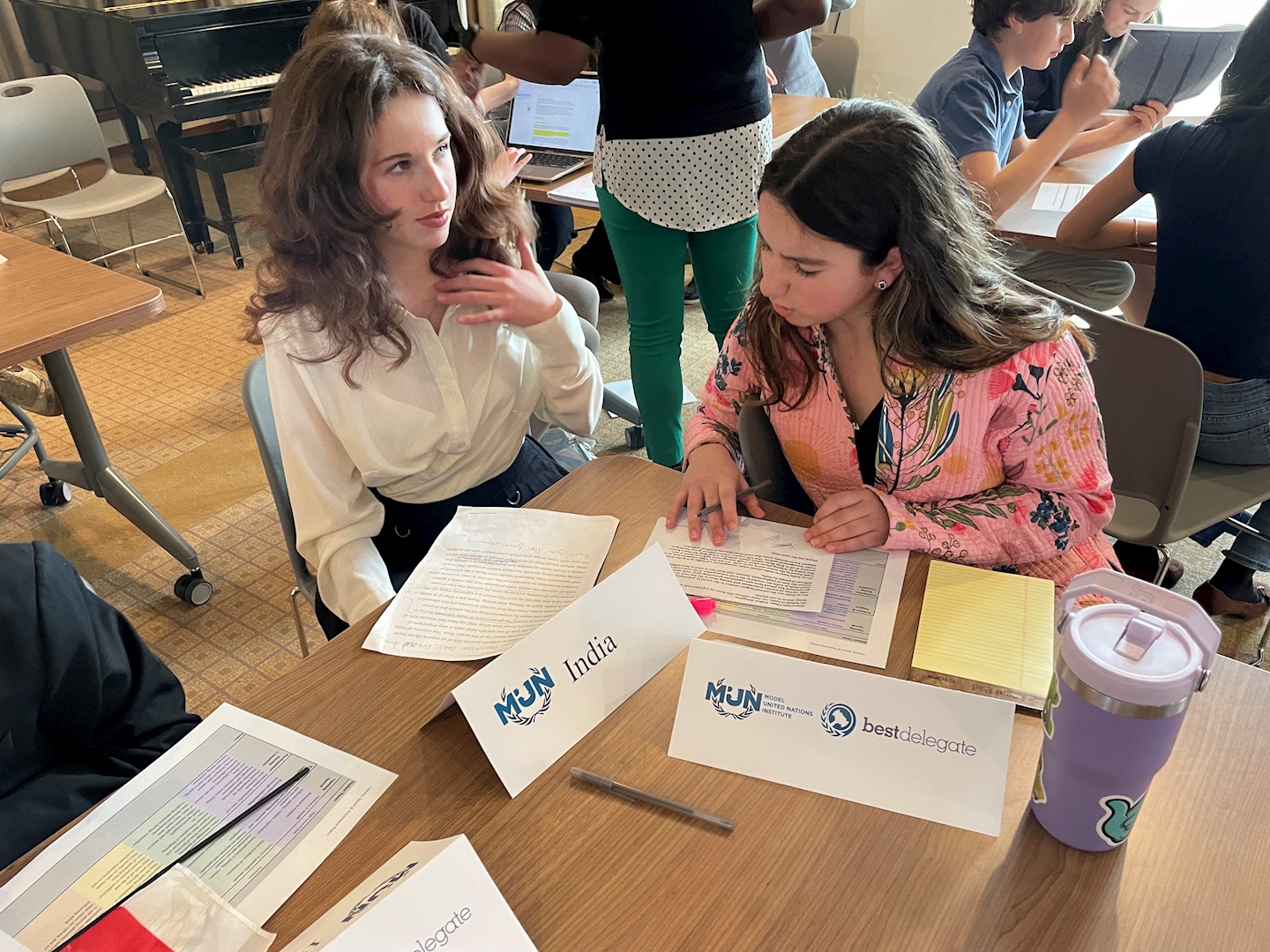
Learn more about Monte Woodard’s vision for an 8th-Grade inquiry project that took students on a worldwide journey in discovery and problem solving on the blog From Costa Rica to Committee: How Coral Reefs Became the Heart of Our Model UN Unit.
When I first started planning our 8th grade Model United Nations (UN) unit, my goal was to make it more than just a simulation. I wanted it to be grounded in something real, getting students to think about the world beyond our classroom. Something students had seen, touched, and cared about. These interactions inspired this unit to be focused on coral reef restoration, using our recent service learning trip to Costa Rica as the anchor.
During our two-week Intersession, 8th grade students and 5 chaperones traveled to Costa Rica, where we visited the only coral restoration lab in Central America. The experience was unforgettable. We saw firsthand how coral fragments are grown, cleaned, and eventually replanted on reefs. We talked with marine biologists James and Pablo, who explained the urgency of restoring these ecosystems for marine life and coastal communities whose livelihoods depend on healthy oceans. Much of the trip was memorable for students, but the engagement I saw while at the lab, the questions I heard, and the curiosity they exhibited led me to our topic: Coral Reef Restoration in the World.
When we returned to Field, my colleague and science teacher, Maddie Cloud, and I introduced the simulation: each student would represent a different country or territory tasked with crafting solutions to protect coral reefs under the 14th United Nations Sustainable Development Goal (SDG): Life Below Water. This SDG is aimed at sustainably protecting our oceans through global partnerships and collective research to implement international laws and policies. Some of the many urgent issues targeted by SDG #14 include ocean acidification, overfishing, illegal fishing practices, and preserving endangered marine species, including those found along coral reefs. Some countries, like Australia or the Philippines, have a direct and well-known relationship with coral reefs. Other represented nations include those with less obvious roles—countries like Egypt, with resilient reefs in the Red Sea, or Palau, which has led bold marine protection initiatives. A background guide helped ground them in their country’s past actions and current challenges, making their research more focused and informed.
Students worked for two weeks preparing opening speeches and writing position papers based on their assigned country’s coral reef health, reliance on marine ecosystems, and past participation in agreements like the Convention on Biological Diversity. They crafted authentic policy suggestions—some focused on expanding Marine Protected Areas, others on regulating tourism or investing in coral farming innovations.
On simulation day, we left the classroom entirely. Maddie reserved a different space to give the day a sense of occasion, a physical and mental shift that let students feel the weight of what they were about to do. They arrived in Western business attire—some in ties, others in blazers or button-downs—many of them nervous but ultimately proud. Each received a placard with their country's name, a notebook for notes, and their speech and research. The transformation was immediate. When students stood to deliver their opening speeches, they did so with a poise and grace I hadn’t anticipated. They confidently addressed the audience, cited evidence, called for partnerships, and proposed grounded, creative, and compassionate solutions. (see the Model UN photo album here)
Throughout the first meeting, they debated over twenty proposed resolutions using a two-thirds majority vote protocol. That number alone is impressive for middle schoolers, but what’s more remarkable is how the resolutions were so thoughtful and distinct. These 8th graders didn’t just recycle ideas from the background guide. They took inspiration from it and then layered on their own logic, values, and creativity. Ten final resolutions emerged, selected through careful discussion and strategic alignment. Some merged in partnership, others faded out, and a few—despite passing the committee vote—didn’t make it to the final round. And that, too, was a lesson: that not every good idea survives the full process, and that diplomacy often involves hard choices.
Here are just a few of the resolutions they proposed and debated:
Blocs formed—not along friend lines, but based on shared environmental, economic, and geographic interests. That alone was incredible. These are 8th graders. Teaming with people outside their friend groups isn’t always easy. But they rose to the occasion, finding common ground, compromising, and collaborating with people they weren’t super comfortable with.
Ultimately, students gained valuable knowledge and demonstrated that middle schoolers can do hard things. In asking students how they felt about the experience, many shared how much the experience had shifted their thinking. There was consensus on things like, “It was a lot of work, but it was actually fun.” Many felt it was cool to be treated like grown-ups, learning how it felt to be in a realistic government meeting. One student casually said, “It was cool learning about a country I knew nothing about. Now I care what happens to it.”
That’s what this unit was really about: helping students see the world beyond themselves, and giving them tools to understand it. They practiced research and public speaking skills, but also empathy, compromise, and interdisciplinary thinking. They didn’t just talk about climate change or ocean acidification in the abstract. They experienced what it feels like to represent people whose lives depend on coral reefs and to fight for something bigger than themselves.
Model UN doesn’t just teach content. It builds character. And if this simulation showed me anything, it’s that 8th graders are more than ready to engage in meaningful, global problem-solving, if we just give them the space, the challenge, and the chance.
